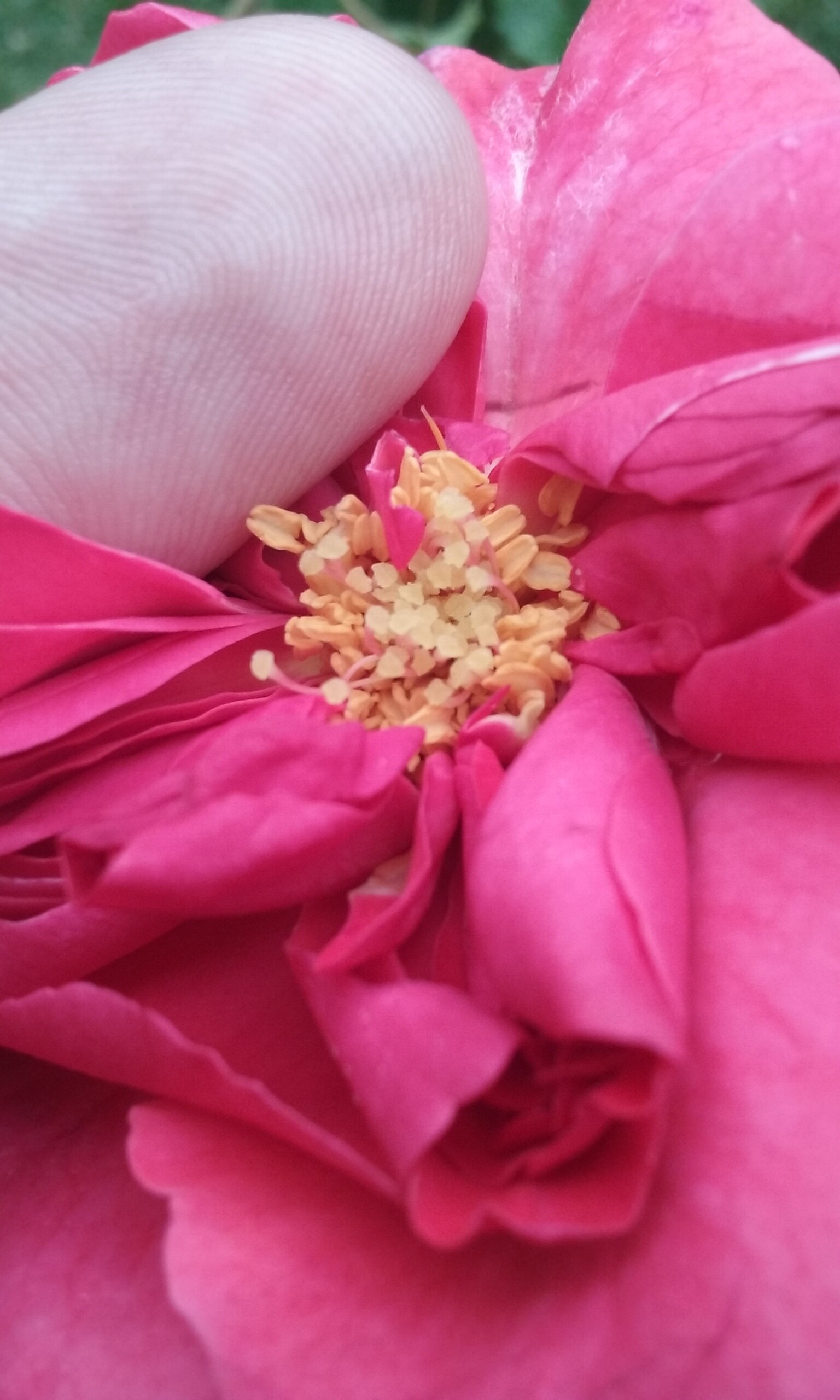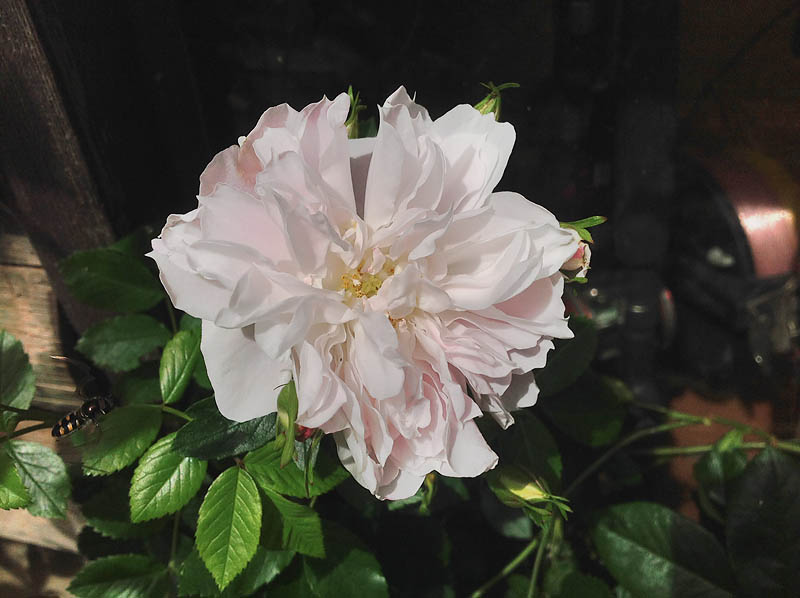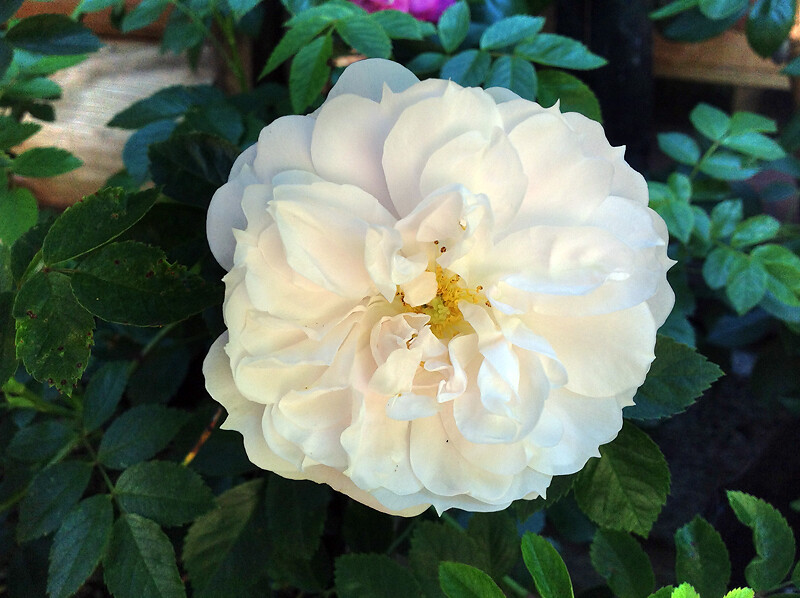Interesting stuff. I was asking because, in my garden, Ruglauca and Rugosa #3 seem to set hips in hot weather rather than the reverse.
Probably not all that odd, Rob. “Hot” is relative. It makes sense some will require heat to reproduce while others will resist it during high heat. “Heat” for you may be ten to fifteen degrees less with far lower transpiration stress than it would be here. Your high heat probably also occurs with fairly high humidity. Ours is most often with single digit humidity, only a fraction of the rain and ground water you have, and significantly higher actual temperature readings.
johannes p, Google Scholar is the program that I mainly use now. It has the advantage of including what more recent publications have cited the paper of interest.
I also subscribe to journal notifications of new issues. For these I mainly rely on Electronic Sites of Botany, Plant Biology & Science Journals
I also subscribe to journal notifications of new issues. For these I mainly rely on [www.e-journals.org]
Henry
How do you do suscribe to journal notifications of new issues??
As an example, for the link I gave go to the H page, there click on Hortscience, http://hortsci.ashspublications.org/
there click on e-mail alerts, sign up with your e-mail address.
Hi Jinksy,
Yes, you are right. I should be specific and say some roses have SI, as there are some that appear not to. With all the range in expression that has been documented, I suggest it is a good perspective to approach SI less qualitatively ( as a yes or no perspective), but more as a continuum with environmental and other factors that impact degree of expression. One thing that is very interesting and can impact and be overlooked in polyploids is that SI can still impact which gametes get through. For instance, let’s say you have a diploid seedling that has two different SI alleles. Let’s say S1 and S2- S1S2. At the diploid level and if SI is able to express itself, pollen grains that segregate for S1 or S2 would be limited in pollen tube growth and their ability to participate in fertilization of that same plant. Pollen from another source with S3 or some other allele would likely not be limited and would preferentially participate in fertilization. When we take a diploid like this and chromosome double it to make a plant with a genotype: S1S1S2S2 it can seem the SI mechanism has broken down and no longer has influence as there can be reliable fruit set from self-fertilization at the 4x level. I have experienced this with my diploid polyanthas that clearly express SI before doubling them. In other crops in the literature also with a gametophytic SI system, it has been found that the pollen grains that get through at the 4x level are ones that segregate for S1S2 and not the homozygous ones that segregated through meiosis S1S1 or S2S2. So even though there can routinely be self-fertilization in such a case, SI may still have an impact in fertilization and also then what genotypes we can recover.
I think the reproductive variations and limitations roses impose to generally promote outcrossing is fascinating. It is fascinating too in that they are able to use ways to get around such mechanisms in order to not totally limit reproduction as well.
Has anyone experimented with different rootstocks to improve hardiness.
While I was living in California and could visit the SJ Heritage garden whenever I wanted to (which was frequently) I noticed one species that went dormant while many other roses went on blooming. I made a note at the time, but have misplaced the name of the species.
Recently I found an article by Otto Froebel of Zurich – The Garden 36: 543 (Dec. 14, 1889) – praising Rosa laxa Ret. as a rootstock.
“Another very important thing is the relatively short season of growth of Rosa laxa. While Rosa canina and its congeners keep growing late in autumn until frost forces them to rest, Rosa laxa will finish growing by the middle of September. In consequence the Roses budded on it are forced to rest in good time and so ripen their wood thoroughly, thus resisting frost much better and becoming far more hardy when budded on R. laxa. Roses forced to rest early in this way will of course be excellent for forcing.”
This reminds me of another item I read years ago that had me mystified. E. F. Allen (The Rose Annual) wrote, “As a boy I, myself, remember the white flowers of R. arvensis as being very common in hedges on the heavier soils of East Anglia but the removal of hedgerows on the boulder clays has now made it locally rare. Indeed in the last 27 years I have searched for this wild rose in many parts of England and have found it growing wild only twice — once in Savernake Forest, Wiltshire, on heavy calcareous clay, and once, very commonly, in woods close to Grafham Water, Huntingdonshire, on very heavy clay.”
How does clay soil improve the hardiness of a rose? Clay soil remains cold longer than properly drained soil. Cold roots retard growth in the Spring, allowing the plant to escape the late frosts. This would not be helpful in avoiding early Autumn frosts, though.
Yellow Brick Road x (Rosa canina x Baby Love) has huge buds on it, way ahead of even Rosa banksia lutescens, so I really do believe that R. canina rootstock can have extended bloom season. This is the first hybrid Ive had that bloomed before the usualy May-June crowd, and Im worried about it being spring frost prone.
Karl, I wonder if the Rosa laxa mentioned by Froebel isn’t actually the “Rosa laxa” (non Retzius) of mostly European rootstock use, a Section Caninae rose that has sometimes been called Rosa coriifolia var. froebelii: 'Rosa coriifolia var. froebelii Rehd.' Rose. The true Rosa laxa Retz. suckers wildly and would be inappropriate for rootstock use, even though it is much hardier.
Stefan
Stefan,
I think you are correct. In fact, it looks like Froebel was responsible for confusing his “Laxa” with the true Rosa laxa of Retzius.
To add to this confusion, Hurst distinguished between
R. coriifolia Fries (R. caesia Sm. R. laxa Hort.) ACDDE and R. coriifolia froebelii Christ ACDEE
Rosa laxa Retz. DDEE
So, there is some resemblance among the three speciesw.
As for the meanings of Hurst’s formulae: A represents a Synstylae speces such as R. multiflora; D would be something like R. beggeriana, while E could be corymbulosa or macrophylla.
I do think that Hurst’s septet theory was an interesting one in his day, but I also think it’s probably about as wrong as flat Earth theory. Modern genetics is much more useful and now that some serious data is becoming widely available, we should be able to put Hurst away in his historical box.
Stefan
Stefan,
I agree that Hurst’s theory has some problems, in particular his assumption that the species defining “genes” must be distributed across the seven chromosomes. But I mention his “septet formulae” because they serve as a short-hand notation for large groups of traits that he observed in examining the plants.
While other academic botanists were splitting species based on the quantity and distribution of pubescence on the undersides of leaves, Hurst examined and tabulated around 100 traits for each specimen. These are most clearly seen in diploid species. In polyploids, some of the traits are more-or-less dominant (e.g., the rimmed, pendulous hips of the E type). When he designated Rosa laxa Retz. as DDEE, he meant that the species combines the traits appropriate to both the D-type (e.g., R. beggeriana) and E-type (e.g., R. macrophylla).
It may be that the “species defining genes” of a species are tied together as a linkage group on one chromosome of the monoploid set. If so, the species, as indicated by the character set, would be determined by that one chromosome with varying degrees of influence from the other six.
Until the chromosomes are sequenced individually, and the diagnostic characteristics of the species are matched to one or more chromosomes, I think the information that Hurst collected is still of value.
Karl
The formula has simplified working with the Caninae types, because I can predetermine which are worth working with, as they are very broad with in the formula. It also tells me when to expect dominant traits, like most A will be climbers during F1. So, it has a very archaic predictive rate, but it has been working in my favor.
The swamp rose might be an intresting addition, as it is native to the northwest and thrives in cooler wet climates though it’s not a modern…
The concept of “integrated species difference” (as Darlington (1949) called it) has immediate practical value to the breeder. He wrote:
“We have to visualise a single super-gene consisting of many parts with mutually adjusted effects. These parts must be recombinable within each group as has been shown both for the prickles of the blackberry by Crane and Darlington (1927) and of the raspberry by Lewis (1940). It is in this way that an enormous range of species has been produced in each group, limited in number indeed only by the supply of materials and names that will enable us to preserve and describe them. On the other hand in crosses between the two groups the ultimate differences are held together. The diploid blackberry segregates arising from the Veitchberry have not merely the general blackberry character; they have the very prickles of their rusticanus grandparent.”
It often happens that we want just one or a few traits from some species. But when we cross it with our garden roses, various other traits - often undesirable - are dragged along with it. Buck (1960) found that even the darker garden roses, noted for producing light and dark red offspring, gave only pastel shades when crossed with R. laxa Retz.
"Pollen from the ‘Crimson Glory’-R. laxa seedling was effective in producing viable seed on a wide range of cultivars of the Hybrid Tea, Floribunda, and Grandiflora garden classes. The seedlings segregate into two sharply defined groups of approximately equal numbers. One group bears a pronounced resemblance to R. laxa in growth habit, foliage and prickle characteristics. The flowers, which are borne only in June, are single, two to three inches in diameter, and are in the lighter tones of pink, salmon, and yellow. All the plants in this group are as hardy as the species parent. "
One way to correct this “weakness” in Rosa laxa would be to first cross it with some other species which shares its “integrated species differences”. According to Hurst, both R. laxa and R. pendulina share the “septet formula” DDEE. So, a hybrid between a deeply colored R. pendulina with R. laxa Retz. should yield a progeny segregating for traits within the shared “integrated species difference” that is usually inherited as a unit in crosses with garden roses. Voila! A red-flowered Laxa, or near enough for breeding purposes.
Therese Bugnet sets op hips in Finland but not in large numbers like, say, typical rugosas. I got ‘Helvi’ from op seeds of TB.
I tried pollinating TB with many different pollens but never got hips - until I tried Lynnie last summer. I got nice fat hips from TB x Lynnie and I’m super excited about that cross. No germination yet. TB op seeds have always needed two winters for me.
Bw,
Jukka
I have a Rosarium Uetersen here in Brazil, It’s hot here. It isn’t look so glorious like in the colder areas photos, but It produce pretty flowers with a lot of stamens with good pollen and nice stigmas. It is very vigorous and healthy, very floriferous. I will try to breed with some rose more compact in hot areas. Good luck in your breeding efforts.
Pictures of my RU that grows here in Brazil.


‘Therese Bugnet’ works well as a pollen parent and makes some interesting seedlings. I put it onto a small ground cover rose called ‘Temple Bells’ (single white) and got this:
[attachment=1]TBxThereseBugnet7.jpg[/attachment]
This is its first flower. You can see the foliage is a nice blend of wichurana and rugosa.
[attachment=0]TBxThereseBugnet6.jpg[/attachment]
It is once flowering and I presume diploid . I have got OP hips from my TB plant, however, have never bothered to try and germinate them. I plan to use TB in more crosses this season. I intend to put it on ‘Carefree Beauty’ first.


The past two seasons I have gotten hips on Therese B using pollen from R. pomifera that I got from David Z., but not with other pollens I have tried including Rainbow KO and Carefree Sunshine (25 tries). I had relatively fewer successful hips this year (4/25) than I seemed to last year but I didn’t count the attempted pollinations last year and ended with over a dozen hips and maybe 10 seeds/hip average. I’m not convinced that the seedlings are actually hybrids but there were zero hips from flowers left untouched this year. I got good germination from last year’s hips, one seedling even bloomed (very double, mauvish) at 6 weeks. Many are still growing. Many more were discarded for mildew and BS or general feebleness. None of the seedlings look like R pomifera. That contrasts with crosses onto other plants where the R pomifera pollen seems to dominate at least most of the bush architecture and leaf appearance traits.
As we begin to learn more about epigenetics, I think we have to carefully reconsider Hurst’s arguments. Controlling RNA sequences may well “oversee” the expression of batches of genes on different chromosomes, If there is an adaptive advantage to keeping certain groups of genes that make a “trait” such as a prickle, or a wrinkled of hairy leaf all together, even if located on different chromosomes, that clustering and controlling RNA will have a selective advantage in the long run.